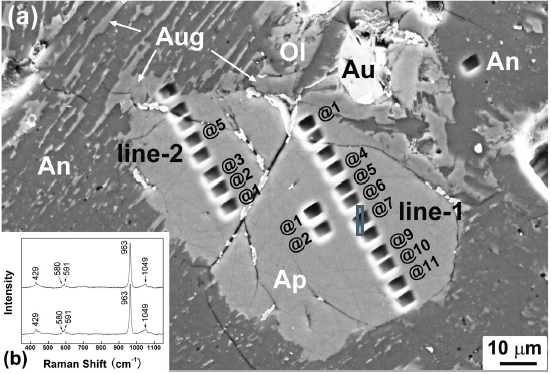
Study of lunar meteorites lead by a team of Chinese scientists provides compelling evidence for the Lunar Giant Impact Hypothesis, which suggests that the Moon formed out of the debris left over from a collision between Earth and an astronomical body the size of Mars, approximately 4.5 billion years ago.
Scientists at the Purple Mountain Observatory of the Chinese Academy of Sciences performed in situ isotopic analysis on three lunar meteorites loaned from NASA and discovered an extremely high degree of chlorine isotopic fractionation, which is a strong indication of ultra-high-temperature and ultra-high-energy condition sprevailing during a giant collision between astronomical bodies.
WANG Ying from the research team said that chlorine isotopic fractionation is a process in which chlorine-35, the lighter isotope of chlorine, relatively evaporates more than the heavier isotope chlorine-37 at high temperatures.
The high degree of chlorine isotopic fractionation in lunar meteorites further confirmed that the moon originated from a giant impact, Wang said.
"The giant-impact hypothesis offers rational interpretations to many observations, such as the moon's rotation speed and the relatively large size of the moon compared with the Earth," said HSU Weibiao, another scientist from the observatory.
In addition, lunar rocks returned by Apollo Astronauts contain the same oxygen isotope composition as the Earth. In other words, the two bodies share the same set of 'DNA'",HSU said.
The research project started in 2011 and the result was recently published on Scientific Reports in early April.

Figure 1. Petrographic and mineralogic characterization of the apatite grain in the feldspathic breccia Dhofar458. (a) Back-scattered electron (BSE) image of the apatite grain, showing that it was subhedral and partially corroded by recrystallized anorthite-augite intergrowths. The rectangular pits are from Nano SIMS analyses. The spot numbers are labelled beside the pits. (b) Raman spectra of the apatite grain, exhibiting characteristic bands of F,Cl-apatite at 963, 429, 580, 591, and 1050 cm?1. Abbreviations: Ap, apatite; An, anorthite; Aug, augite; Ol,olivine. (Image By HSU Weibiao)

86-10-68597521 (day)
86-10-68597289 (night)

52 Sanlihe Rd., Xicheng District,
Beijing, China (100864)

